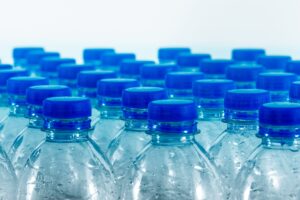You may never look at a liter bottle of water the same way again! According to a study published on January 8, 2024 in the Proceedings of the National Academy of Sciences titled “Rapid single-particle chemical imaging of nanoplastics by SRS microscopy,” three widely available brands of bottled water contained 240,000 pieces of nanoplastics. For the study, the researchers from Columbia University and Rutgers University purchased liter bottles of water widely sold at Walmart. To analyze the water, the researchers used dual laser-powered microscopes called Raman scattering (SRS) microscopy and used machine learning to identify them.
Microplastics are plastic particles are less than five millimeters (less than one-quarter inch) in diameter, and nanoplastics are less than a micron or micrometer in diameter. For example, a human hair is about 83 microns wide. Previous studies have look at microplastics, but the current study found 10 to 100 times more nanoplastics than microplastics in the bottled water. Nanoplastics are “believed to be more toxic since their smaller size renders them much more amendable, compared to microplastics, to enter the human body.”
The researchers believe that the plastic comes from the bottle and the filtration system used by the water companies which are supposed to remove pollutants. The study found pieces of PET (polyethylene terephthalate), the base product for most plastic bottles; and polyamide, a type of plastic that is present in water filters. The potential health impacts are currently under review to determine if nanoplastics are dangerous or how dangerous they are. One study published by National Library of Medicine found that microplastics can affect the digestive, respiratory, endocrine, reproductive, and immune systems of the human body. According to the United Nations, humans produce more than 440,000,000 tons of plastic each year, one-third of which is used just once; and about 80% of plastic ends up in landfills or the environment (e.g. oceans, rivers, and lakes).
–By Lynn D.

